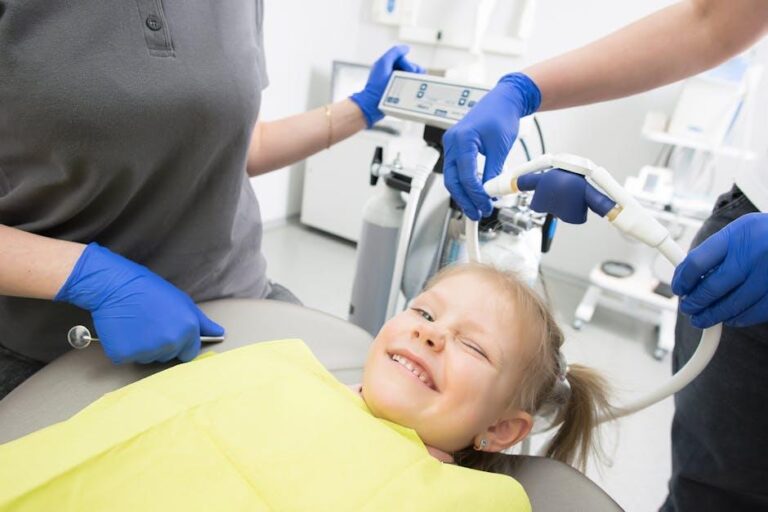1 in 3 Kids Has Dental Problems, Poll Finds – U.S. News & World Report
Recent research uncovered that one in three children in the United States currently faces dental problems, raising growing concerns about pediatric oral health. This eye-opening poll sheds light on the prevalence of dental issues among kids, the causes behind these challenges, and practical ways parents and caregivers can help reduce risks.
The Current State of Children’s Dental Health in the U.S.
The poll, conducted by leading health organizations and cited by U.S. News & World Report, highlights alarming statistics about oral health in children:
- 1 in 3 children has experienced tooth decay or other dental problems.
- Dental cavities remain the most common chronic childhood disease.
- Many kids do not receive timely dental care due to access or awareness issues.
These numbers reflect a critical public health challenge, emphasizing the need for increased education, preventive care, and accessibility to dental services for families.
Understanding the Common Dental Problems Affecting Kids
Here are some of the most frequent dental issues reported among children:
| Dental Problem | Description | Common Causes |
|---|---|---|
| Tooth Decay (Cavities) | Destruction of tooth enamel leading to cavities | Poor oral hygiene, high sugar intake, irregular dental visits |
| Gingivitis | Inflammation of the gums with redness and swelling | Plaque buildup, lack of flossing, poor brushing techniques |
| Tooth Sensitivity | Pain or discomfort in teeth in response to hot/cold | Enamel erosion, cavities, trauma, grinding teeth |
Key Causes Behind Increased Dental Problems in Children
Several factors contribute to the rise in pediatric dental issues:
- Dietary Habits: Frequent consumption of sugary snacks, sodas, and processed foods promotes cavity formation.
- Lack of Regular Dental Visits: Many families skip routine checkups due to cost, time constraints, or lack of dental insurance.
- Insufficient Oral Hygiene Education: Children often need guidance on proper brushing and flossing to prevent plaque buildup.
- Socioeconomic Barriers: Limited access to dental care disproportionately affects low-income communities.
- Fluoride Deficiency: Inadequate fluoride exposure reduces children’s natural protection against decay.
Benefits of Early Dental Care and Prevention
Taking proactive measures in children’s dental care not only prevents problems but also promotes lifelong oral health. Some key benefits include:
- Reduced Risk of Cavities: Early intervention helps stop decay before it becomes severe.
- Improved Self-Esteem: Healthy smiles boost confidence in social and academic settings.
- Better Overall Health: Poor oral health in children is linked to other health problems like infections and nutritional deficiencies.
- Cost Savings: Preventative care cuts down the need for expensive treatments like fillings, root canals, or extractions.
Practical Tips for Parents to Promote Healthy Teeth
Parents and caregivers play a vital role in maintaining children’s dental health. Here are actionable tips to encourage good habits:
- Start Early: Clean babies’ gums with a soft cloth and introduce brushing as soon as the first tooth appears.
- Brush Twice Daily: Supervise until kids can brush properly themselves (usually about age 7-8).
- Use Fluoride Toothpaste: Fluoride strengthens enamel and fights cavities effectively.
- Limit Sugary Foods and Drinks: Opt for healthier snacks like fruits, cheese, or nuts.
- Schedule Regular Dental Visits: Aim for checkups every six months or as recommended by your dentist.
- Encourage Flossing: Introduce flossing when two teeth touch to prevent plaque buildup between them.
Case Study: How Early Intervention Changed Maria’s Smile
Maria, a 7-year-old from Ohio, struggled with recurrent cavities due to frequent candy consumption and infrequent dental visits. After her parents enrolled in an oral health education program:
- They helped Maria improve her brushing technique.
- Reduced sugary snacks in her diet.
- Consistently took her to her local dental clinic.
Within a year, Maria’s cavities stopped progressing, and her dentist noted significant improvement in her oral health. This case illustrates how timely action can reverse negative dental trends in children.
Firsthand Experience: What Parents Are Saying
“We never realized how important regular dental care is for kids until our son developed early cavities at age 5. Now, with consistent brushing, healthier food choices, and half-year dental visits, his smile is brighter and healthier than ever.” – Jessica M., New York
“Our local community center provides dental screenings and education for kids. It’s been a game-changer in raising awareness about oral health and preventing future problems.” – Carlos R., Texas
Summary Table: Pediatric Dental Health Quick Facts
| Fact | Details |
|---|---|
| Prevalence | 1 in 3 U.S. kids experience dental problems |
| Most Common Issue | Tooth decay (cavities) |
| Prevention Method | Regular brushing, flossing, dental visits |
| Benefit of Early Care | Reduces need for costly dental treatments |
Conclusion
The poll revealing that 1 in 3 kids suffers from dental problems is a crucial call to action for parents, educators, healthcare providers, and policymakers alike. By understanding the common causes and committing to early, consistent oral care habits, families can ensure healthier smiles for the next generation. Prevention is not only possible but essential – and with the right guidance, we can turn these concerning statistics into stories of success and bright, confident smiles.
Stay proactive about your child’s dental health and consult a pediatric dentist regularly to catch and treat any issues before they worsen. Remember, healthy teeth pave the way for a healthier life!


